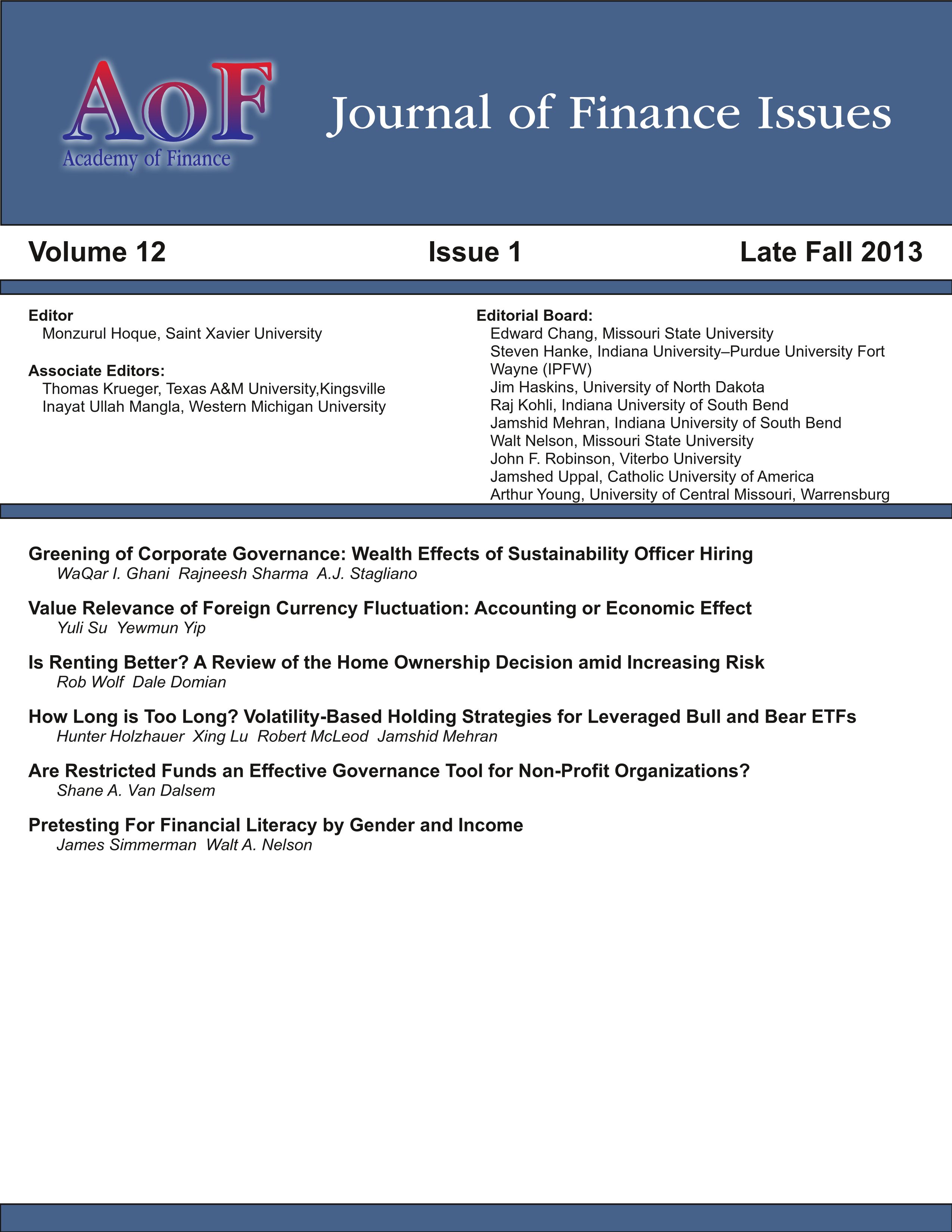How Long is Too Long? Volatility-Based Holding Strategies for Leveraged Bull and Bear ETFs
DOI:
https://doi.org/10.58886/jfi.v12i1.2294Abstract
Since their favorable introduction in the U.S. in 2006, leveraged bull and bear exchangetraded funds (ETFs) have provided short-term investors with the opportunity to express their directional views regarding a wide variety of indexes. However, unlike traditional unleveraged ETFs, leveraged ETFs are not intended to be used as long-term trading instruments. Instead, leveraged ETFs are designed to return a multiple of their benchmark index on a daily basis. Leveraged ETFs are structured only for short-term investors because these funds must be rebalanced each day to prevent leverage from becoming too excessive. This daily rebalancing complicates predicting long-term returns for leveraged ETFs due to both compounding and volatility. Using Morningstar return data and Chicago Board Options Exchange volatility index data, we investigate the effects of compounding and expected market volatility on specific longterm holding strategies for leveraged bull and bear ETF returns. We show that compounded leveraged returns over these holding periods are comparable to compounding the respective multiple of their underlying benchmark return with tracking error increasing over time and with leverage. Our results also show that expected market volatility has a significant effect on tracking error, after adjusting for expenses, and that this effect increases over time and with leverage. These results suggest that volatility indexes may be used by sophisticated investors to devise trading rules for long-term holding strategies for leveraged bull and bear ETFs.





